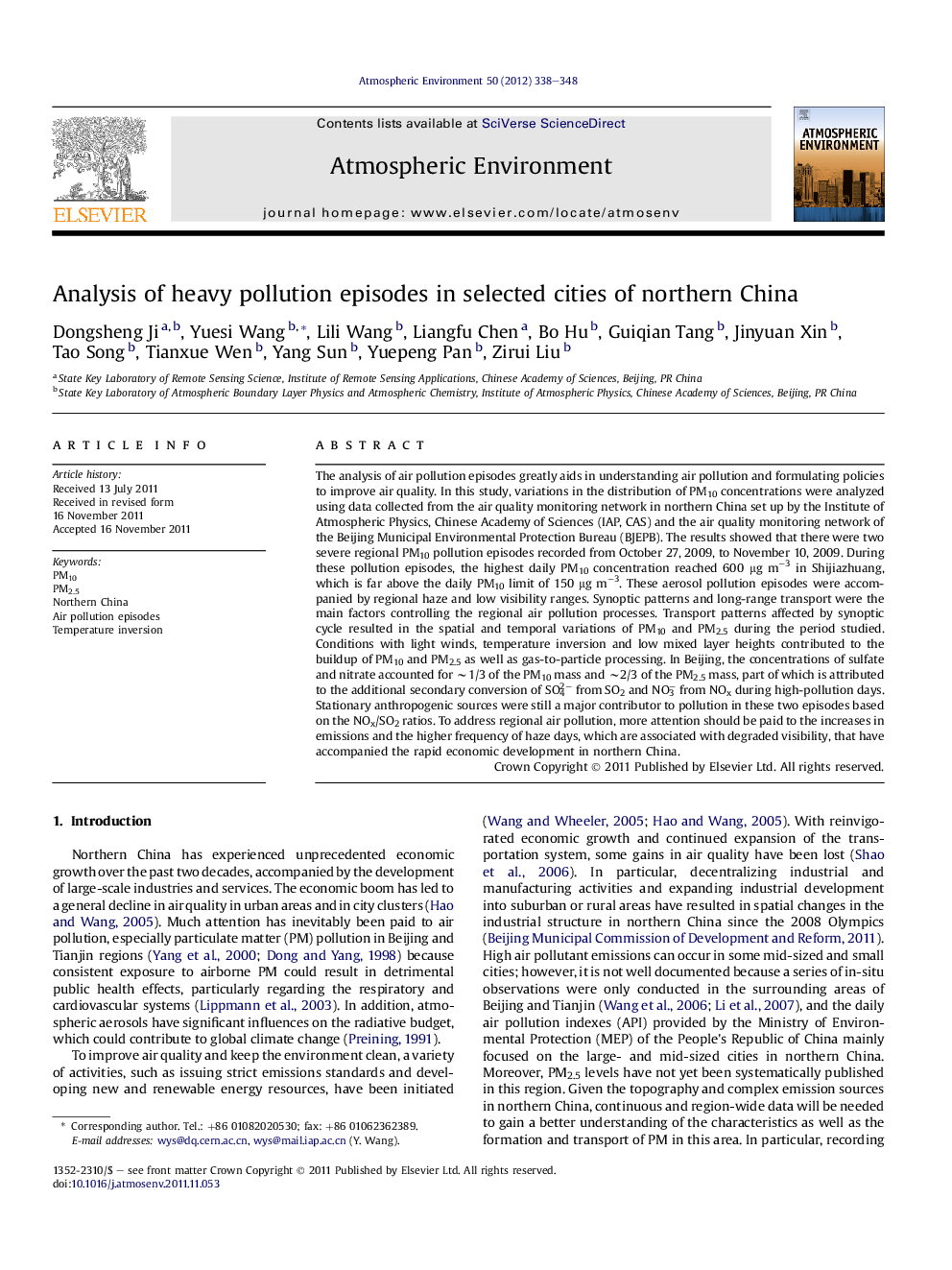| Article ID | Journal | Published Year | Pages | File Type |
|---|---|---|---|---|
| 6342666 | Atmospheric Environment | 2012 | 11 Pages |
The analysis of air pollution episodes greatly aids in understanding air pollution and formulating policies to improve air quality. In this study, variations in the distribution of PM10 concentrations were analyzed using data collected from the air quality monitoring network in northern China set up by the Institute of Atmospheric Physics, Chinese Academy of Sciences (IAP, CAS) and the air quality monitoring network of the Beijing Municipal Environmental Protection Bureau (BJEPB). The results showed that there were two severe regional PM10 pollution episodes recorded from October 27, 2009, to November 10, 2009. During these pollution episodes, the highest daily PM10 concentration reached 600 μg mâ3 in Shijiazhuang, which is far above the daily PM10 limit of 150 μg mâ3. These aerosol pollution episodes were accompanied by regional haze and low visibility ranges. Synoptic patterns and long-range transport were the main factors controlling the regional air pollution processes. Transport patterns affected by synoptic cycle resulted in the spatial and temporal variations of PM10 and PM2.5 during the period studied. Conditions with light winds, temperature inversion and low mixed layer heights contributed to the buildup of PM10 and PM2.5 as well as gas-to-particle processing. In Beijing, the concentrations of sulfate and nitrate accounted for â¼1/3 of the PM10 mass and â¼2/3 of the PM2.5 mass, part of which is attributed to the additional secondary conversion of SO42â from SO2 and NO3â from NOx during high-pollution days. Stationary anthropogenic sources were still a major contributor to pollution in these two episodes based on the NOx/SO2 ratios. To address regional air pollution, more attention should be paid to the increases in emissions and the higher frequency of haze days, which are associated with degraded visibility, that have accompanied the rapid economic development in northern China.
⺠Two severe regional PM10 pollution episodes were recorded in northern China. ⺠The highest daily mean concentration of PM10 reached 600 μg mâ3 in Shijiazhuang. ⺠These two episodes were accompanied by regional haze and low visibility ranges. ⺠Region-wide anthropogenic features and the transport patterns affected by synoptic cycle resulted in the severe episodes.
